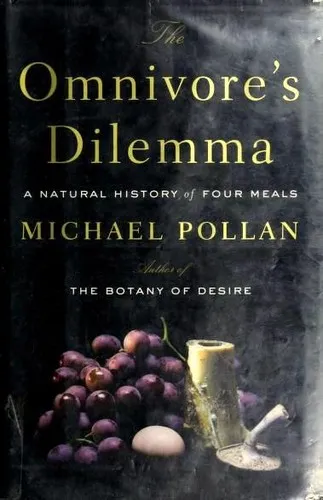2
mentions
mentions

3/5. Few thoughts in review: http://www.goodreads.com/review/show/490735236
— Andrej Karpathy
2013-02-05 on twitter.com
https://twitter.com/karpathy/status/298928233053822978
Unlike Michael Pollan's "In Defense of Food", I had trouble finishing the Omnivore's Dilemma. The book provides an intriguing glimpse into the process by which food arrives at your plate, but suffers from a repetitive tone, frequent rambling, twisted flow of ideas, and questionable pace. In the end, I felt that I could summarize the entire 600-page book into ~6 pages of information. If you intend to simply learn about how food is produced, read quickly and feel free to skip around. But if you don't mind your nuggets of interesting information scattered randomly across the book, sugar-coated with irrelevant but generally enjoyable prose, you might enjoy this more than I did. On to few details that stood out for me: The first chunk of the book is about industrialization of food production. Quite plainly, feeding hundreds of millions of people requires sacrifices in the food system through adoption of techniques that scale well, at cost of nutritional value and potentially adverse long-term health effects. These practices are detailed the book and it was interesting to follow the implications of a system that is based on producing massive quantities of food at the lowest cost possible. The most interesting insight for me was that while the food companies managed to bring down the costs of food, a more careful analysis would consider the hidden societal costs of dealing with the aftermath of eating that junk. Second, the image of a cow stuck in a tiny enclosure, with a window hatch into its rumen, eating corn, a soup of chemicals, and standing knee-deep in its own manure is disgusting. Enjoy your next (cheap, yay!) burger. And if you're tempted to switch to a chicken burger instead, think about chicken that were genetically modified and fed corn to grow much fatter more quickly, also resting motionless deep in manure because their legs are too weak to support their unnaturally large weight. The last part that stood out for me was Michael's description of the Polyface farm. This farm attempts to grow food organically and in harmony with nature. It is based on ideas of symbiosis, where species (grass, cows, chicken, worms) depend on each other in a circle, turning sunlight into food. This chapter was a fascinating read, but unfortunately it is questionable whether such an approach to food can scale to millions of people. I would have liked to see more discussion concerning the economics. Overall, enjoyable read if you want to know more about food, but be prepared to sacrifice more time than it should take. It might just be worth it, though! 3/5
— Andrej Karpathy
2013-02-05 on goodreads.com